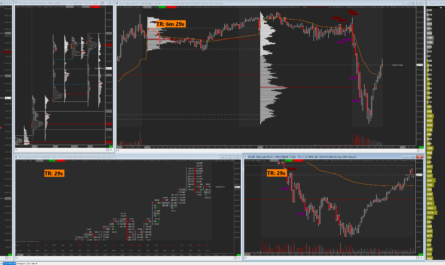It is the dream of many investors: To have so much money on the high side at some point in the future that they no longer have to work and can live off their passive income. We had already presented the concept and the individual steps of financial freedom in detail in this blog. But how much money is actually needed for this? A simple rule of thumb helps here: the 4% rule.
This states that you can withdraw about 4% of your savings each year without getting into financial trouble over the next 30 years. However, this presupposes an investment that yields a higher return than 4% on average. This therefore rules out the simple investment in overnight money; a broadly diversified stock or ETF portfolio is a mandatory prerequisite. Such a portfolio has yielded an average annual return of 7% in recent years. Of course, the concept is supported by the compound interest effect, which is a yield boost that should not be underestimated over decades.
The 4% rule goes back to the Trinity study
This concept goes back to the Trinity Study, which was conducted in 1998 at the university of the same name in Texas. It is still regularly updated today. In this study, researchers calculated returns over different 30-year periods using a fictitious financial asset, half of which consisted of U.S. stocks and bonds. They calculated how much wealth was needed to avoid bankruptcy over all periods.
They went back to 1925 and repeated the process to 1995, screening a total of 41 30-year periods. Even in the worst case scenario, you would never have gone bankrupt if you had taken out just 4% of your initial assets each year, and that’s despite the fact that there were so many stock market crashes during that period.
So in order to be able to withdraw 4% of your investments each year, you need to have saved up a decent amount. To determine this, you first have to calculate your monthly costs, extrapolate them to an entire year, and then multiply by 25.
Factor 25 for annual expenses
So if you need 2,000 euros a month for your living expenses, you need to have saved at least 600,000 euros. With monthly expenses of just 1,500 euros, that’s only 450,000 euros. Anyone looking for additional income in the form of a 450-euro job can thus even make do with a deposit volume of around 135,000 euros.
We have already shown several times in this blog that such sums are not an unrealistic goal, especially for young people. If you start early, continuously increase your savings rates through a steadily rising income, and forgo unnecessary luxury consumer spending, you can easily achieve this goal by the time you retire and thus spend a carefree retirement.
| Monthly expenses | Yearly expenses | Assets needed |
|---|---|---|
| 450 Euro | 5.400 Euro | 135.000 Euro |
| 800 Euro | 9.600 Euro | 240.000 Euro |
| 1.000 Euro | 12.000 Euro | 300.000 Euro |
| 1.500 Euro | 18.000 Euro | 450.000 Euro |
| 2.000 Euro | 24.000 Euro | 600.000 Euro |
| 2.500 Euro | 30.000 Euro | 750.000 Euro |
| 3.000 Euro | 36.000 Euro | 900.000 Euro |
But there is criticism
But there is also criticism of the 4% rule, which is why it should only be regarded as a rough guide. This calculation does not take into account taxes and fees, as well as the costs of health and long-term care insurance, which you then have to pay yourself. In addition, the stock market is volatile. Prices can rise and fall, and the minimum return required for this concept is not guaranteed. An additional financial buffer is therefore advisable.
Keyfacts
- a maximum of 4% of the assets should be withdrawn per year
- then you can live carefree for 30 years without going broke
- you have to know your expenses…
- … and take them times 25
- but taxes, fees, insurances and volatility are not taken into account
- a financial buffer is always advisable







